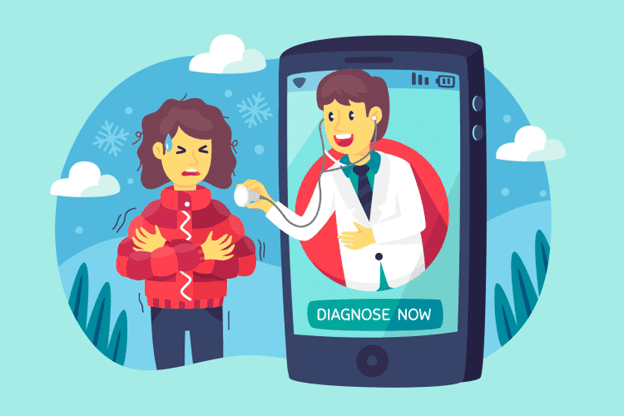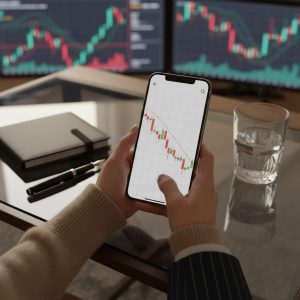The landscape of personal injury law continues to evolve as telemedicine becomes increasingly mainstream in healthcare delivery. With virtual consultations now accounting for a significant portion of medical appointments, attorneys and clients alike must understand how telemedicine evidence impacts personal injury claims in 2025.
Contents
The Rise of Telemedicine in Personal Injury Cases
Telemedicine has transformed from an emergency pandemic solution into a permanent fixture of modern healthcare. This shift directly affects how personal injury attorneys document and present medical evidence. Virtual consultations, remote monitoring, and digital health records now play crucial roles in building compelling cases for injured clients.
The convenience of telemedicine has made it easier for injured parties to seek immediate medical attention following accidents. Rather than delaying treatment due to transportation issues or scheduling conflicts, patients can quickly connect with healthcare providers through video calls. This immediate access creates valuable documentation that establishes a clear timeline between the incident and medical intervention.
Admissibility Standards for Telemedicine Evidence
Courts across the United States have adapted their evidence standards to accommodate telemedicine records. The Federal Rules of Evidence apply equally to virtual and in-person medical consultations, provided proper authentication procedures are followed. Medical records generated during telemedicine appointments carry the same legal weight as traditional office visits when properly documented.
Authentication requirements for telemedicine evidence include verifying the healthcare provider’s credentials, confirming the patient’s identity during the consultation, and ensuring the technological platform meets HIPAA compliance standards. Video recordings of medical consultations may be admissible if both parties consent and the recordings accurately represent the examination.
The quality of telemedicine evidence often depends on the thoroughness of documentation. Healthcare providers must maintain detailed notes about visual observations, patient-reported symptoms, and any limitations encountered during remote examinations. These comprehensive records become essential components of personal injury claims.
Strengths of Telemedicine Evidence
Telemedicine offers unique advantages in personal injury cases that traditional medical records cannot provide. Video consultations capture real-time patient behavior, pain responses, and mobility limitations that static medical notes might not fully convey. These visual elements can powerfully demonstrate the extent of injuries to judges and juries.
The timestamp accuracy of digital platforms provides precise documentation of when medical consultations occurred. This chronological precision helps establish clear causation links between accidents and resulting injuries. Insurance companies find it harder to dispute the timing of medical treatment when digital records provide exact dates and times.
Telemedicine also enables more frequent check-ins with healthcare providers, creating a detailed progression of the patient’s recovery journey. This continuous monitoring produces comprehensive evidence of how injuries impact daily life over extended periods. The accumulated data strengthens claims by showing consistent medical attention and ongoing symptoms.
Remote consultations often result in more honest patient communication. Many individuals feel more comfortable discussing their pain and limitations from home environments rather than clinical settings. This increased openness leads to more accurate documentation of injury impacts on quality of life.
Limitations and Challenges
Despite its benefits, telemedicine evidence faces certain limitations in personal injury cases. Physical examinations conducted remotely cannot provide the same diagnostic accuracy as hands-on medical assessments. Defense attorneys often challenge telemedicine findings by arguing that crucial physical signs may have been missed during virtual consultations.
Technology failures can compromise the integrity of telemedicine evidence. Poor video quality, audio issues, or platform malfunctions may create gaps in documentation that opposing counsel can exploit. Personal injury attorneys must ensure their clients use reliable technology and backup systems during important medical consultations.
Some medical specialists remain hesitant to provide definitive diagnoses through telemedicine platforms. This reluctance can weaken personal injury claims that rely primarily on virtual medical evidence. Attorneys often need to supplement telemedicine records with in-person examinations for complex injury cases.
The digital divide affects access to quality telemedicine services. Clients with limited internet connectivity or outdated devices may receive substandard virtual care, resulting in incomplete medical documentation for their injury claims.
Best Practices for Legal Teams
Personal injury attorneys must develop new strategies for handling telemedicine evidence effectively. This evolution requires updated approaches to case preparation and client counseling. Successful personal injury lawyers educate potential clients about the importance of quality telemedicine documentation in their claims.
Attorneys should guide clients to ensure their telemedicine appointments are conducted in well-lit environments with stable internet connections. Clients must understand that their behavior and responses during virtual consultations will be scrutinized just as carefully as in-person medical visits.
Legal teams need to establish relationships with healthcare providers who excel at telemedicine documentation. These partnerships ensure that medical records meet legal standards and provide comprehensive injury assessments. Attorneys should also verify that their healthcare partners use HIPAA-compliant platforms and maintain proper authentication protocols.
Combining telemedicine evidence with traditional medical documentation creates the strongest personal injury cases. This hybrid approach addresses potential weaknesses in virtual consultations while maximizing the benefits of increased medical accessibility and comprehensive documentation.
The Importance of Marketing Telemedicine Expertise
As telemedicine becomes central to healthcare delivery, marketing this expertise has become crucial for personal injury law practices. Clients increasingly expect their attorneys to understand how virtual medical consultations impact their cases, making telemedicine knowledge a vital differentiator in competitive legal markets. Personal injury lawyer marketing strategies must emphasize attorneys’ familiarity with digital health records, remote consultation procedures, and the unique advantages of telemedicine evidence in building stronger injury claims. Firms that effectively communicate their telemedicine expertise attract more informed clients and establish themselves as forward-thinking practices capable of handling modern injury cases in our evolving healthcare landscape.
Future Implications
The integration of artificial intelligence and advanced monitoring devices will further enhance telemedicine evidence quality. Wearable technology that tracks movement patterns, sleep disturbances, and pain levels provides objective data to support subjective injury claims. These technological advances create new opportunities for documenting injury impacts that were previously difficult to quantify.
Standardization of telemedicine platforms across healthcare systems will improve evidence consistency and admissibility. As courts become more familiar with virtual medical consultations, evidentiary procedures will likely streamline, reducing challenges to telemedicine-based personal injury claims.
The continued evolution of telemedicine in personal injury law requires ongoing adaptation from legal professionals. Attorneys who embrace these technological changes while understanding their limitations will better serve their injured clients and build stronger cases in our increasingly digital healthcare landscape.
Understanding how telemedicine evidence functions within personal injury claims is essential for achieving favorable outcomes in 2025 and beyond. The successful integration of virtual medical documentation with traditional legal practices will define the next generation of personal injury litigation.
Wrapping it up…
Telemedicine is now a core part of personal injury litigation in 2025. Virtual consults, remote monitoring, and digital records create faster, clearer timelines from incident to treatment, and—when properly authenticated—carry the same weight as in‑person records under the Federal Rules of Evidence. Strong telemedicine evidence hinges on thorough documentation, verified provider credentials and patient identity, HIPAA‑compliant platforms, and (when consented) accurate video recordings.
Key strengths include visual demonstrations of pain and mobility, precise timestamps that bolster causation, frequent check‑ins that show recovery progression, and often more candid patient reporting. Challenges remain: virtual exams can miss hands‑on findings, tech glitches can undermine reliability, some specialists avoid definitive tele‑diagnoses, and the digital divide can degrade documentation.
Best practices: prepare clients for high‑quality tele-visits (lighting, stable internet, professional demeanor), partner with providers skilled in telemedicine documentation, ensure authentication and HIPAA compliance, and use a hybrid record set by supplementing virtual evidence with in‑person exams when needed. Firms should also market telemedicine expertise to meet client expectations. Looking ahead, AI, wearables, and platform standardization will further strengthen and streamline telemedicine evidence in personal injury claims.




